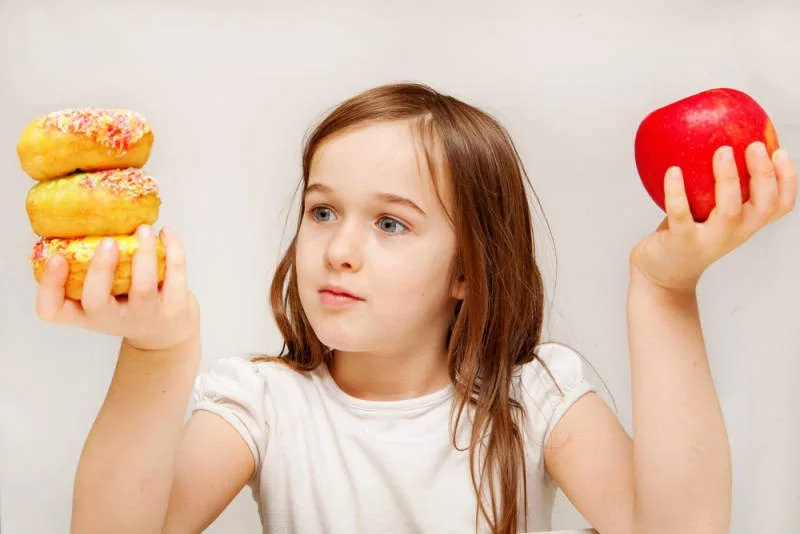Almost everyone can agree that children need to be eating healthy foods. Yet, a recently published peer-reviewed paper suggests that the tactics adults often use to get their children to eat healthier don’t always work in their favor. However, there is a simple solution.
The Reality of Healthy Eating In Children
Unfortunately, this strategy is certainly not ideal as it can result in parents eating unhealthy foods, and the children may also end up eating unhealthily if they eat mostly from their parent’s meals. Additionally, it does not set a good example for children who need to be following healthy eating habits.
Assisting children in eating healthy meals
Wight and her team then tested several interventions, one of which involved them partnering with a nursery school that was interested in promoting healthy eating among children. Parents associated with the school were offered a free family dinner, whereby they first selected a meal for their child from a healthy kid’s menu. They then selected a meal for themselves from a menu that had a mix of healthy and unhealthy options. Half of the parents (randomly assigned) saw a menu that prompted them to think of their meal as “for you and only you!” The other half did not see this prompt to think of their meal as only for them.
According to the results of the intervention, encouraging parents to think of their meals as their own resulted in about a third of them being more likely to choose the healthy option for themselves.
Parent habits influence childhood habits
The findings suggest policymakers and schools may want to consider the role parents and their food choices play in efforts to encourage healthy eating among children. As for the parents, it is recommended that the backup plan be scrapped and that both parent and child should eat nutritiously.
Teaching your kids healthy eating habits
Poor eating habits in childhood can follow kids well into adulthood, causing health issues and complex relationships with food. By teaching kids about food that’s good for their health when they’re little, you can set them up for a lifetime of wellness. Building healthy meal patterns for kids starts at home, and you can do many things as a parent to encourage healthy eating.
“Kids need good nutrition to live, grow, and be healthy. But inadequate or improper types of nutrition can lead to childhood obesity, high cholesterol, high blood pressure, prediabetes, and further issues once in adulthood,” explains pediatric cardiologist Christina Fink, MD.
To ensure healthy eating habits for your children, here are a few things you can try.
1. Set family meal times
Kids love routines, so it is important to try to eat together as a family and serve meals and snacks around the same time every day if possible. This way, kids are less likely to graze and overeat, and it also teaches them healthy eating habits and table manners.
“Eating as a family is good for social, emotional, and developmental purposes, and having meals together is an opportunity to teach kids about portions,” says Dr. Fink, “For example, you can show them that half our plates should be non-starchy vegetables and some fruit.”
It’s best to limit meals to a reasonable length of time – no longer than 30 minutes. You can set a timer to stick to this expectation and help kids stay focused during meals.
2. Embrace breakfast
While each meal of the day is pretty important, eating a healthy breakfast provides your child with the fuel they need to make it through the day, as well as help them grow and develop properly.
Dr. Fink says that breakfast need not be a large or elaborate meal just, “something that’s nutritious to get their bodies going and fuel their metabolism for the day.”
Turn to easy, kid-friendly, dietitian-approved breakfast ideas like whole-wheat toast with natural peanut butter or plain Greek yogurt sprinkled with fiber-rich, low-sugar cereal and a handful of fruit.
3. Involve kids in healthy meal planning and prep
kids enjoy participating and having input in what they do and giving them choices allows them to feel both independent and invested. So, here are ways they can participate in the creation of family meals and snacks:
- Take them to the grocery store. Give them simple choices, like “Do you want to buy red grapes or green grapes?”
- Occasionally let kids decide which veggie to serve for dinner, as they’ll feel a sense of pride from helping to prepare a meal, thus increasing their willingness to eat it.
- Give them small tasks: Kids can participate in age-appropriate kitchen responsibilities, like mixing ingredients, washing fruits and veggies, or peeling potatoes.
4. Make water a priority
If your child doesn’t get the opportunity to drink water at school, then they may be thirsty or even dehydrated once they get home.
“When your kids get home from school, have them drink some water instead of grabbing a snack right away,” Dr. Fink recommends. “If they’re not getting enough hydration, sometimes kids think they’re hungry when they’re actually thirsty.”
Conclusion
You are what you eat, and if you want your children to grow up into healthy and functional adults, then you need to give them the tools to do so – and that involves healthy eating habits.
References
Healthy Eating for Kids (clevelandclinic.org)
Healthy Eating for Kids: Nutrients, Eating Habits, and Picky Eaters (healthline.com)
How To Instill Healthy Eating Habits In Your Children (webmd.com)



![women [longevity live]](https://longevitylive.com/wp-content/uploads/2020/01/photo-of-women-walking-down-the-street-1116984-100x100.jpg)










